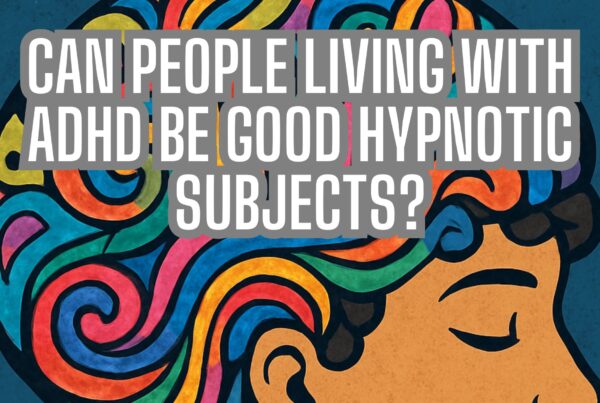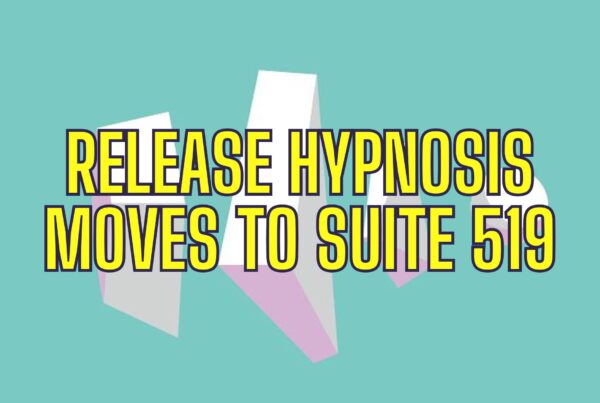Demystifying and Simplifying Hypnosis: Unveiling the Truth Behind Common Myths
One of the most vital steps of any hypnosis session is to take a moment to explain what hypnosis is and isn’t to my clients. Many people walk in with a belief around hypnosis that can be somewhat ‘Hollywood’. There are beliefs about Svengali figures and swinging watches, mind control, and ‘going under’. Instead, to have a successful session, it is important to take the time simplifying hypnosis and to demystify the misconceptions. They quickly learn that hypnosis is a natural phenomena and a skill that they can learn.
The Enigmatic World of Hypnosis
In the intricate tapestry of psychological practices, hypnosis has often been shrouded in mystery and misconception. The practice, which has roots deeply embedded in the history of medical and psychological treatments, has been subject to numerous myths that have both fascinated and perplexed the public. From the eerie portrayals in cinematic worlds to the therapeutic rooms of clinicians, hypnosis has traversed a path that is both scientifically intriguing and theatrically misleading.
The journey of hypnosis, from the era of Franz Anton Mesmer, who introduced us to the concept of ‘animal magnetism,’ to the scientific explorations of the 21st century, has been nothing short of a rollercoaster. Mesmer’s practices, once dismissed as mere quackery, unknowingly sowed the seeds for future explorations into the human mind and its susceptibility to suggestion and altered states of consciousness.
Debunking the Myths of Mind Control
The notion that hypnosis places individuals under an irresistible spell, compelling them to adhere blindly to the hypnotist’s commands, has been a pervasive myth that has permeated public perception. Contrary to the belief that one becomes a puppet, devoid of will, under hypnosis, the reality is strikingly different. Hypnosis, rather than being a tool of absolute control, is a collaborative journey where the individual’s intentions and expectations play a pivotal role in their experience.
Research spearheaded by psychologists like Steven Jay Lynn has illuminated the fact that individuals under hypnosis retain a significant degree of control and can resist suggestions. Hypnosis, therefore, is not a phenomenon that is done to an individual but is a state that is actively and collaboratively entered into.
Hypnosis and the Conscious Mind
Another prevalent myth that has captivated the imagination of many is the belief that hypnosis is a sleep-like trance where the individual loses awareness of their surroundings. This belief, despite its widespread acceptance, is far from the truth. Hypnosis, rather than inducing a sleep-like state, allows individuals to remain awake, aware, and in tune with their environment, albeit in a different state of consciousness.
Moreover, the effects of hypnosis are not merely attributable to relaxation or a reduction in peripheral awareness. Studies have demonstrated that hypnosis can be effectively induced even in conditions that do not promote relaxation, such as while engaging in exercise. This dispels the notion that the efficacy of hypnosis is tied to its ability to induce a relaxed state.
The Memory Conundrum in Hypnosis
The allure of unlocking hidden memories and traversing back into forgotten times has made the concept of hypnosis as a tool for memory retrieval particularly enchanting to the public. The belief that hypnosis can unlock repressed childhood memories or provide a window into past lives has been a topic of both cinematic and literary exploration. However, the scientific community stands on a different pedestal, armed with research that refutes these notions.
Contrary to the belief that hypnosis enhances the reliability of memory, studies have consistently shown that memories retrieved under hypnosis are not more accurate or reliable than those retrieved without it. The intricate web of memory is susceptible to suggestion and fabrication, and hypnosis, rather than being a key to the past, often becomes a canvas where present expectations and beliefs paint a picture that might be far from historical reality.
Beyond Pretense: The Genuine Phenomenon of Hypnosis
While skeptics may relegate hypnosis to the realms of pretense and fakery, scientific explorations tell a different tale. Neuroimaging studies have illuminated the genuine neurophysiological effects of hypnotic suggestions, revealing activations in brain regions that align with the experiences being suggested. Hypnosis, therefore, transcends mere pretense, providing a genuine and experiential alteration in perception and cognition.
In the words of Michael Nash, hypnosis emerges not as a spectacle of theatrics but as a “real phenomenon” that has tangible effects on the mind and body. It becomes a tool, not of deception, but of exploration into the realms of consciousness, suggestibility, and the malleable nature of our perceptions and memories.
Simplifying Hypnosis at Release Hypnosis Melbourne Hypnotherapy
Since 2015, Lawrence Akers has been simplifying hypnosis to the people of Melbourne. Based on St Kilda Rd, Release Hypnosis is an easy and convenient location to get to and accessible by the ANZAC station train and tram stop. For those not wanting to come onsite, an online service can be provided. Release Hypnosis can help with a wide range of presenting issues, and I offer a free 30 minute no obligation discovery call for those who are unsure if hypnotherapy is the right way forward for them.
Book Your FREE 30 Minute Consultation With Release Hypnosis NOW!
You may also like to read:
Discovering Purpose and Values: A Path to Mental Well-being
Can’t Visualise in Hypnosis? Here’s What You Can Do Instead.
Dealing with Financial Stress and Crisis: Finding Peace Amid Turbulence
What Is The Success Rate of Hypnosis?








